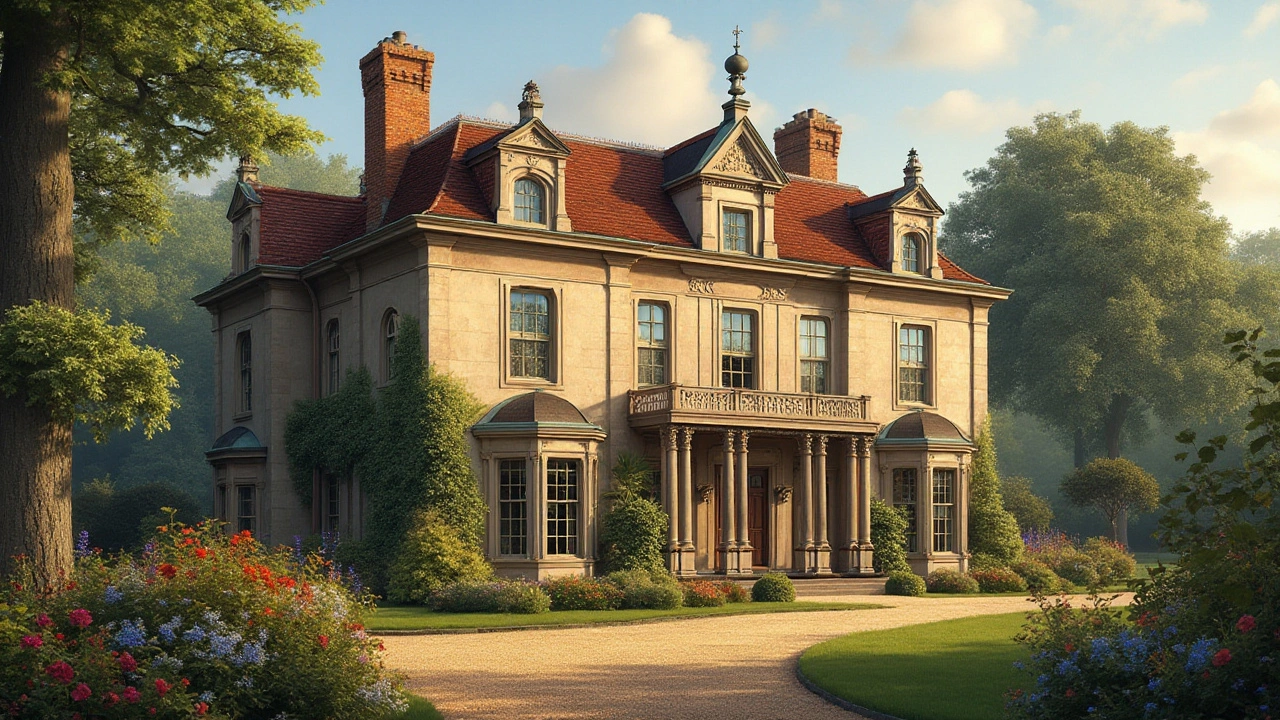Italianate architecture, a style that flourished from the mid-19th century, showcases grandeur through its unique blend of Italian Renaissance and picturesque aesthetics. Known for its distinctive features such as wide eaves with decorative brackets, tall windows, and cupolas, Italianate architecture brought a touch of European elegance to residential and public buildings. This article delves into the history, defining characteristics, and the cultural resurgence of this architectural style. Discover the craftsmen who brought Italianate to life and learn tips for recognizing these architectural gems today.
Victorian Era Homes: Identify, Care for, and Update Your Old House
Ever wondered why Victorian homes look so dramatic? Built mostly between 1837 and 1901, these houses mix bold shapes, carved trim, and colorful paint to stand out on any street. If you own one or love the look, this guide tells you how to spot the main styles, what problems to expect, and practical ways to update without losing charm.
How to spot the styles
Queen Anne is the one with turrets, wrap porches, and lots of ornament. Italianate has tall narrow windows, bracketed eaves, and a boxier shape. Second Empire shows a mansard roof that creates a full attic level. Gothic Revival uses pointed arches and steep gables. Stick and Eastlake highlight exposed wood framing and angular trim details. You don’t need to be an expert—look for roof shape, window type, porch design, and decorative trim to place a house.
Common issues and quick fixes
Old wood trim and siding rot, so check porch posts, soffits, and window sills first. Original sash windows are charming but drafty; start by repairing sash cords, weatherstripping, and adding storm windows before thinking about full replacement. Many Victorians have old knob-and-tube wiring or dangerous knob wiring—hire an electrician to inspect. Lead paint is likely; test before sanding. Insulating walls can be tricky; use blown-in cellulose or rigid board in attics and basements to avoid damaging plaster.
Keep or replicate visible trim, newel posts, brackets, and balusters. If you must replace decorative elements, copy profiles from surviving pieces or use historically accurate reproductions. When updating kitchens or bathrooms, hide modern systems behind walls or in closets so visible rooms keep their period feel. Choose paint colors that match the era or a historically informed palette—deep greens, warm brick reds, muted golds, and creams work well. For energy upgrades, add insulation in attic spaces, upgrade to efficient boilers or heat pumps, and seal air leaks around chimneys and windows.
Restore or rebuild a porch—this is a Victorian focal point. Repair gutters and downspouts to protect woodwork. Replace damaged flashing and fix roof valleys to prevent leaks. If you want a new HVAC, pick compact ductless systems that avoid invasive duct runs. Landscaping should frame the house; keep mature trees trimmed and add period-appropriate shrubs.
Look for contractors experienced with historic homes and check local preservation groups for guidance and grants. Online forums and local historical societies can point you to reproduction trim makers and paint palettes.
Plan for permits and budgets early. Many towns require review for exterior changes, so talk to your local building office before you start. Budget for surprises—old plumbing, hidden rot, or outdated foundations can add costs. Set priorities: roof, structure, weatherproofing first, then cosmetic work. Small staged projects keep you living in the house while upgrading over time. Expect timelines to shift — older houses surprise.
Victorian houses reward care. With targeted repairs and smart updates you can keep the drama, improve comfort, and protect value for decades.

